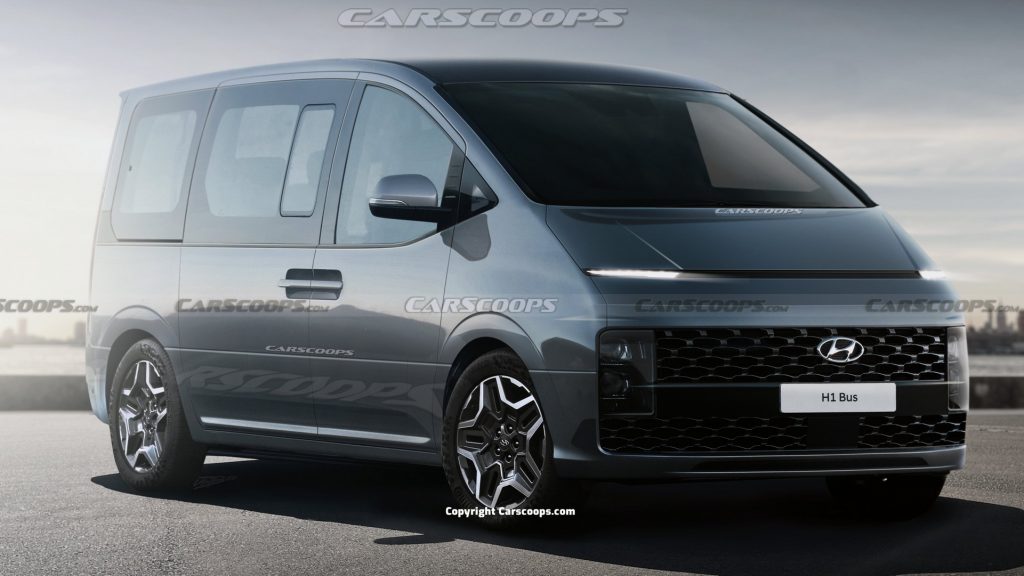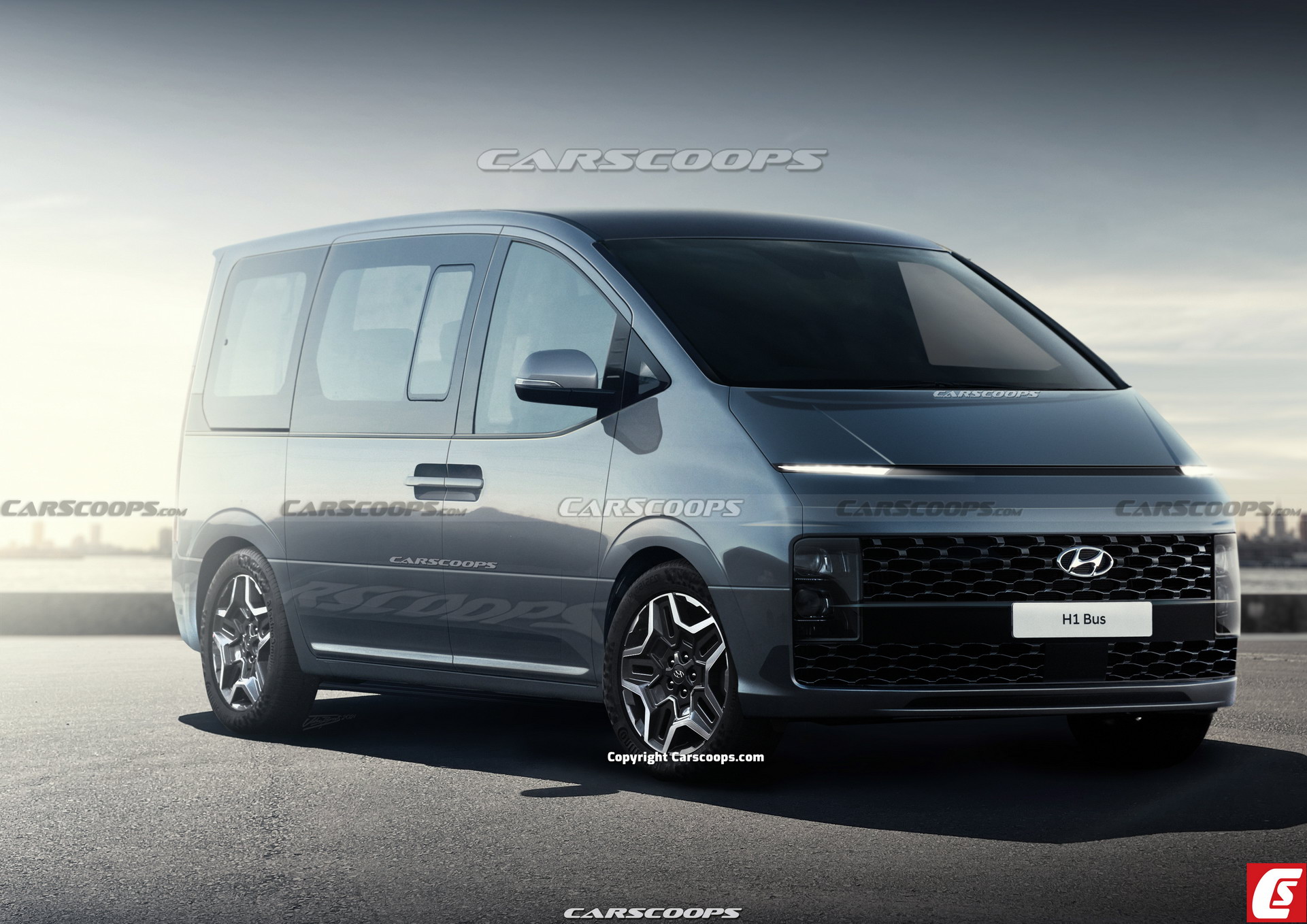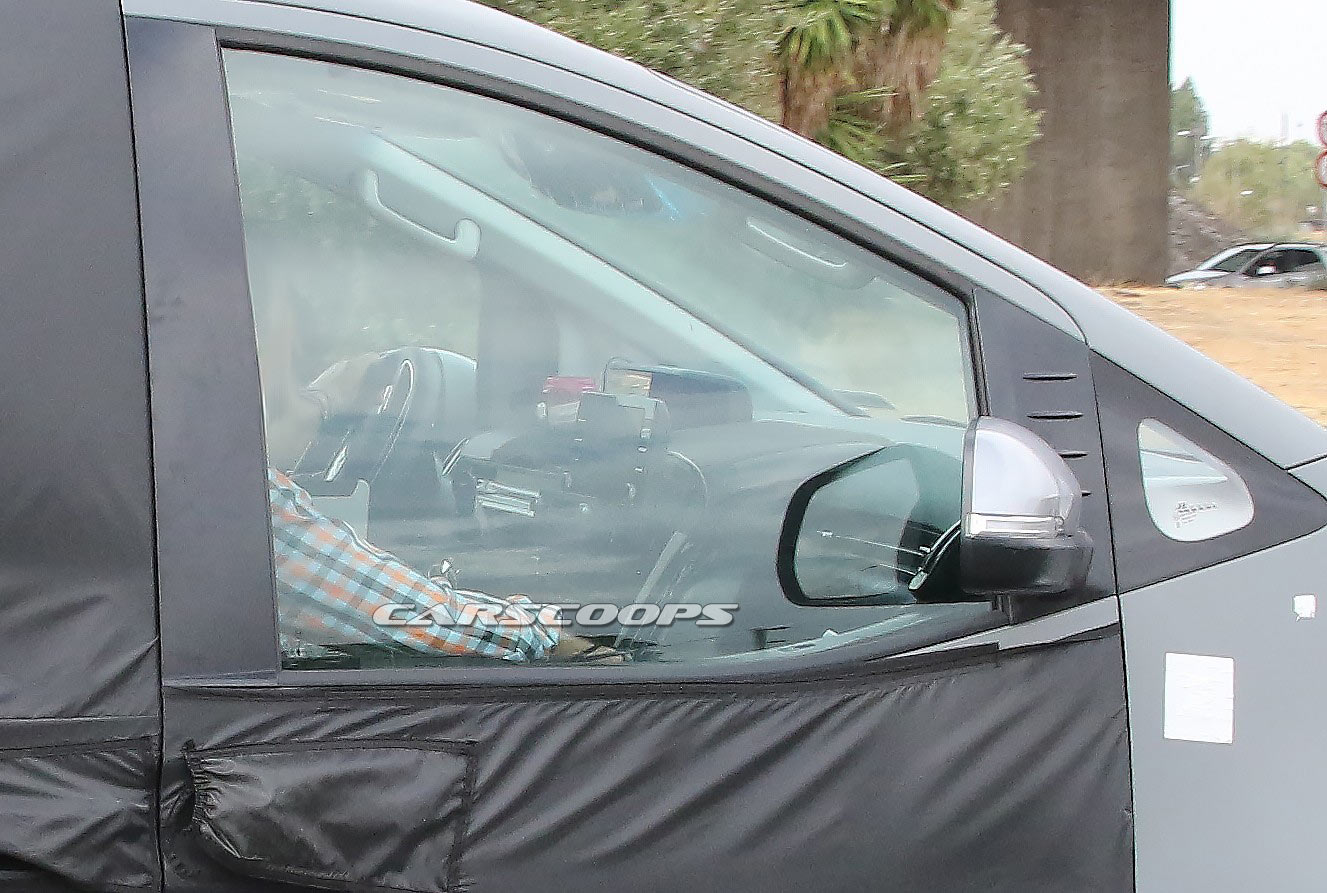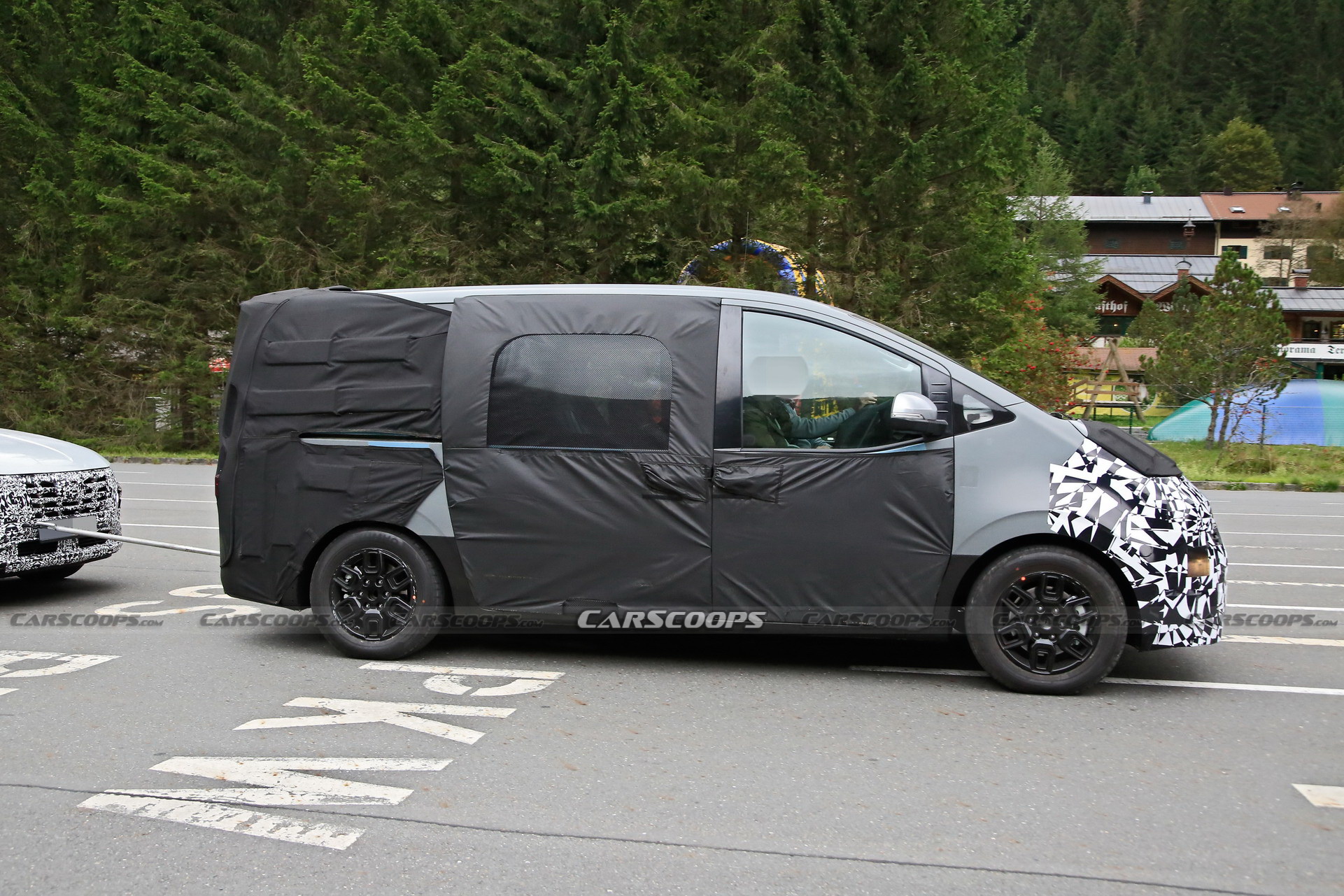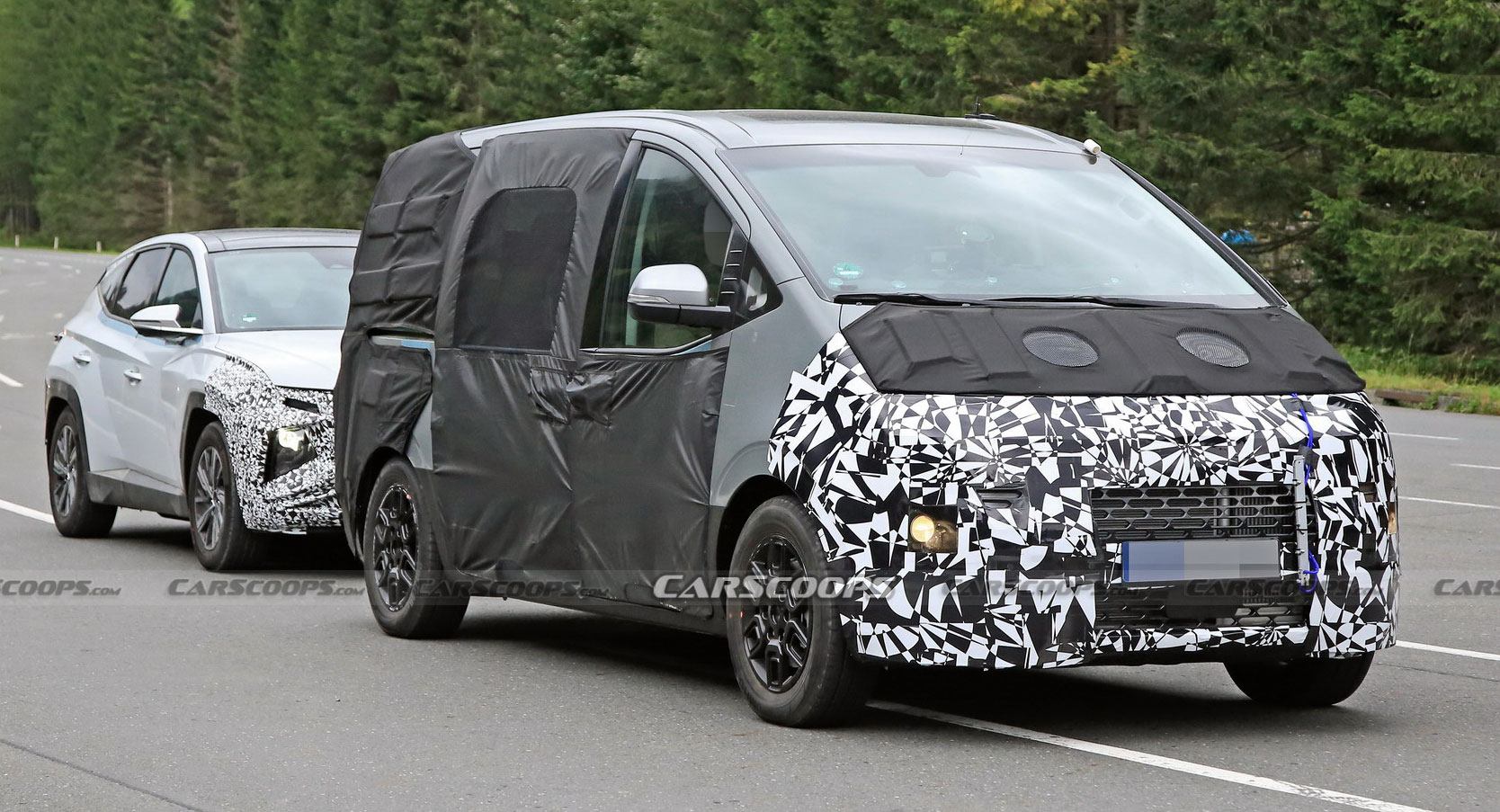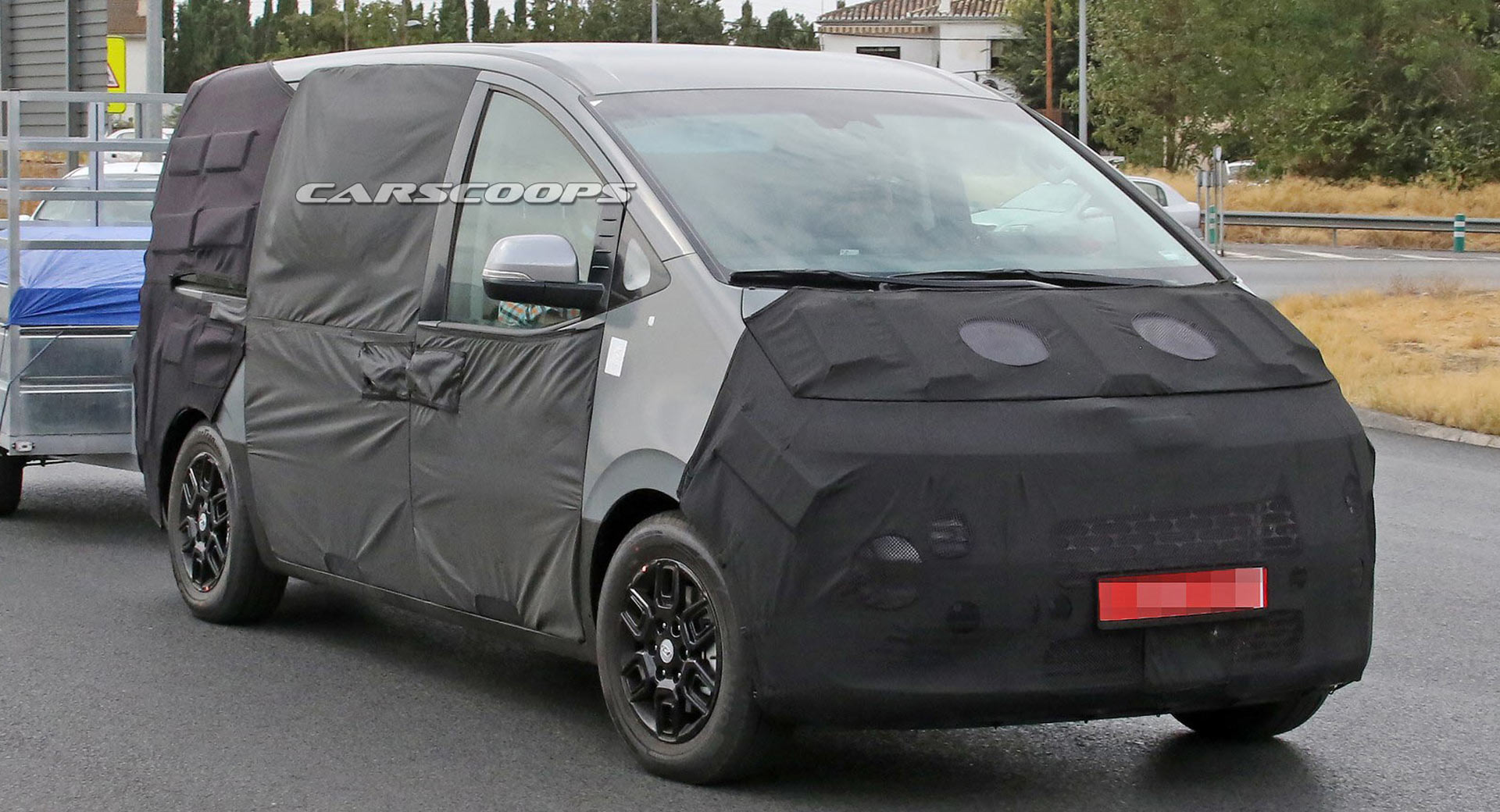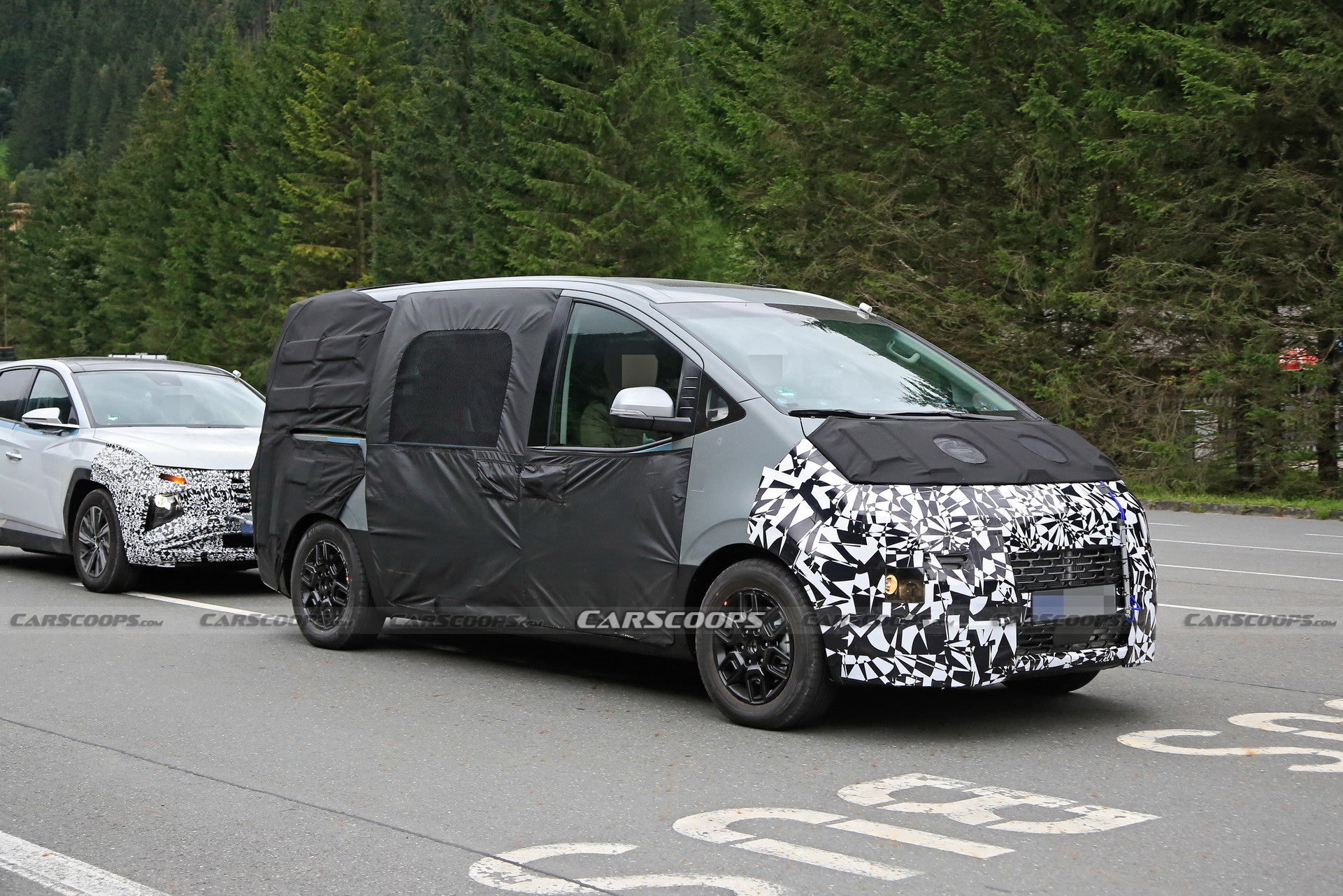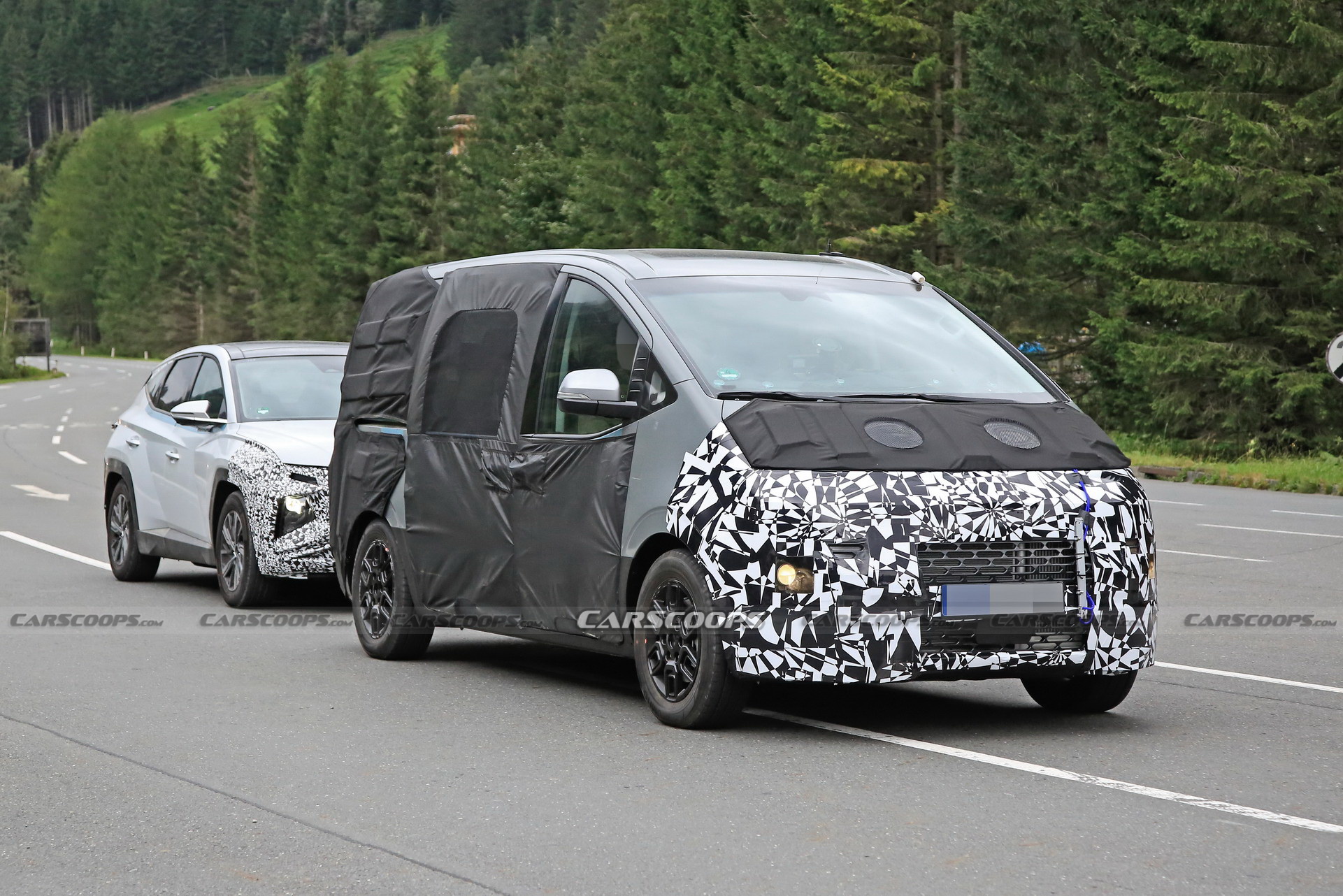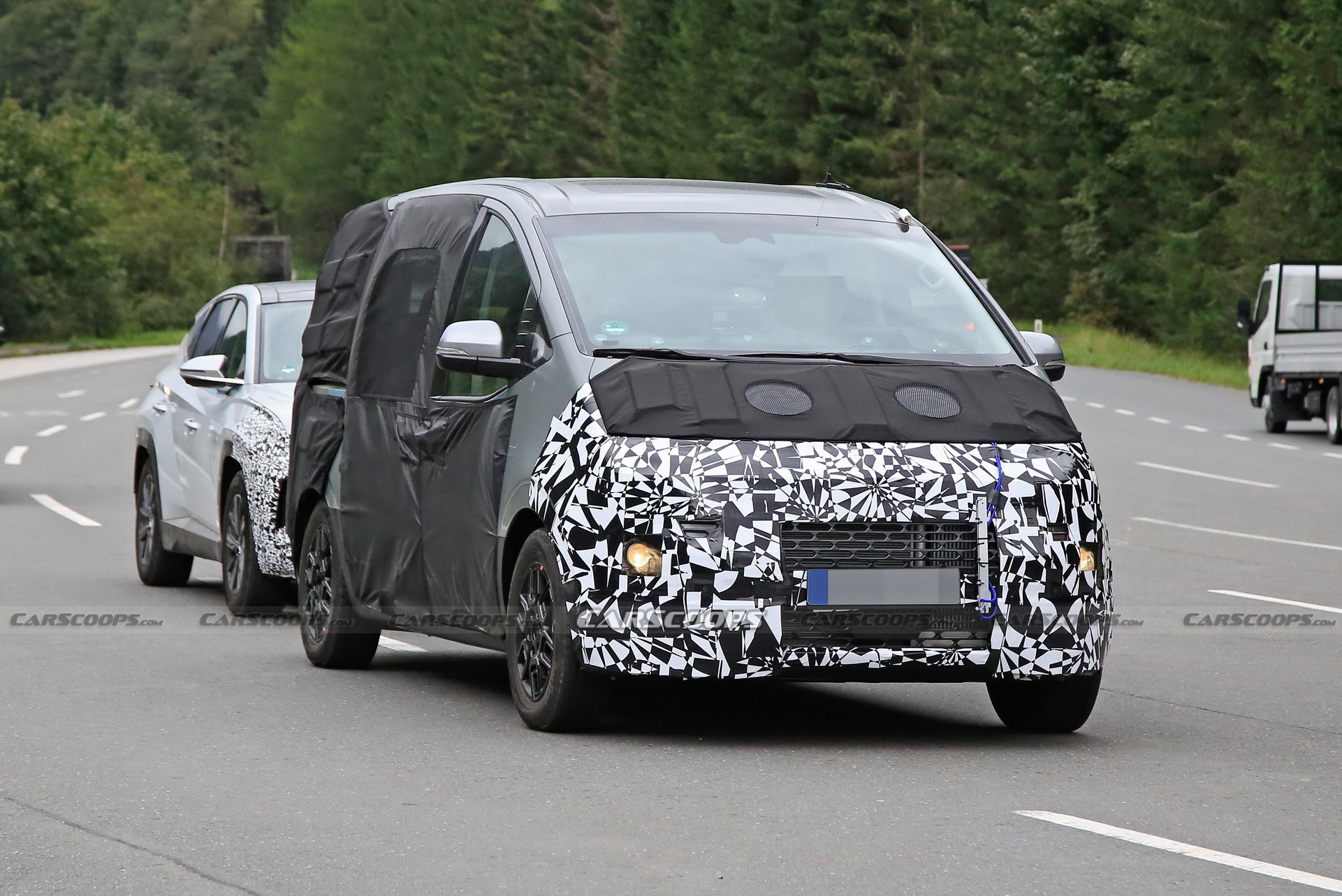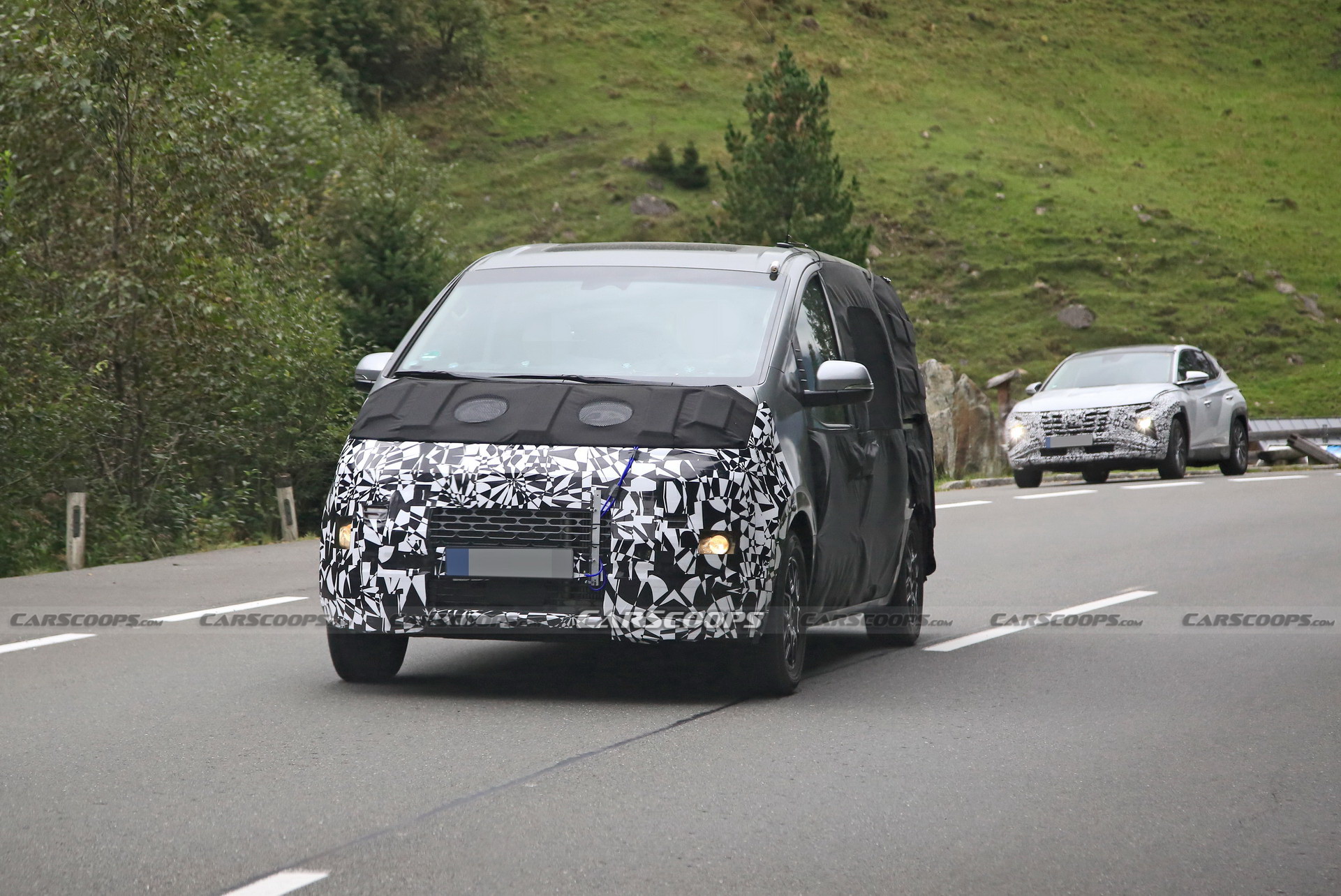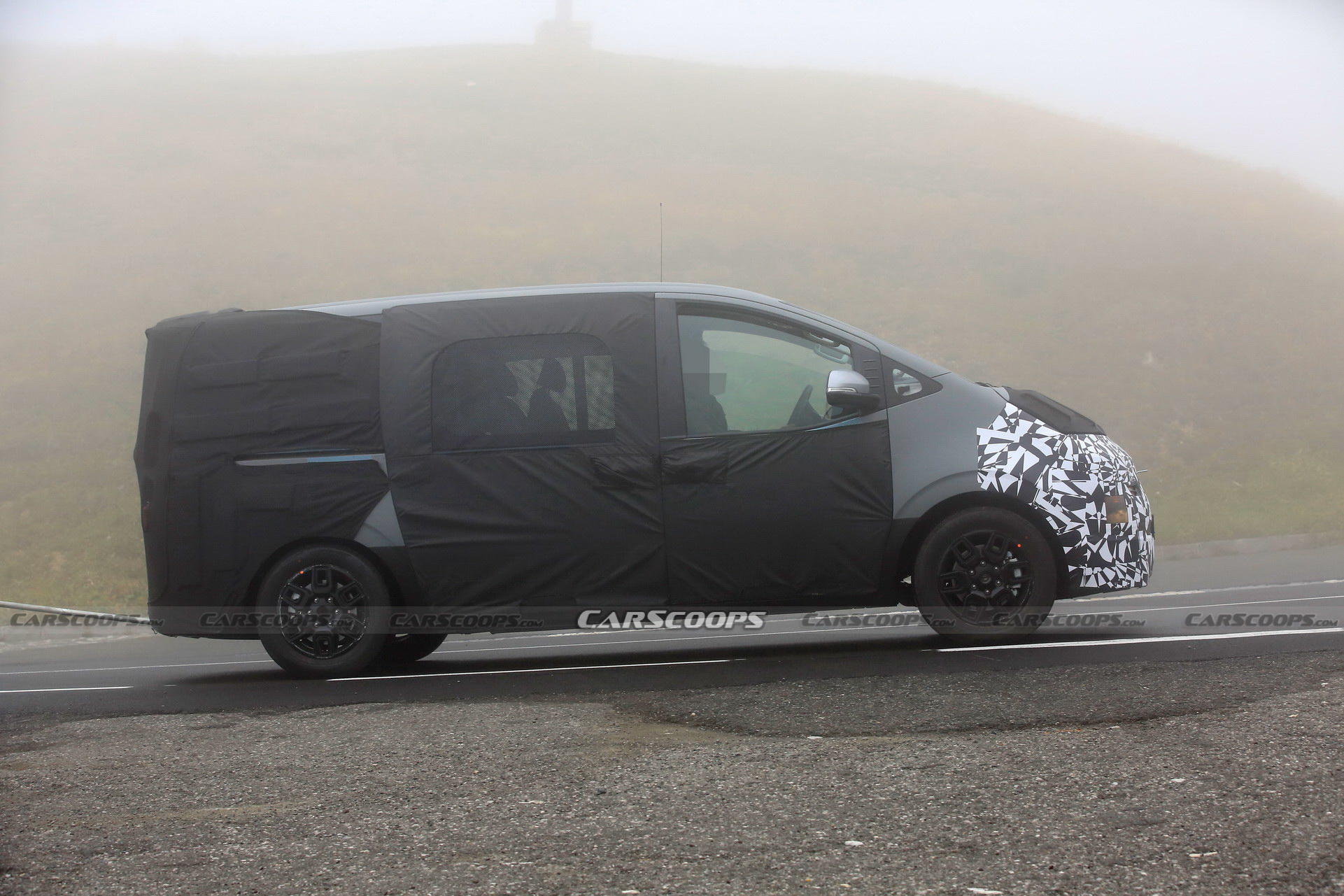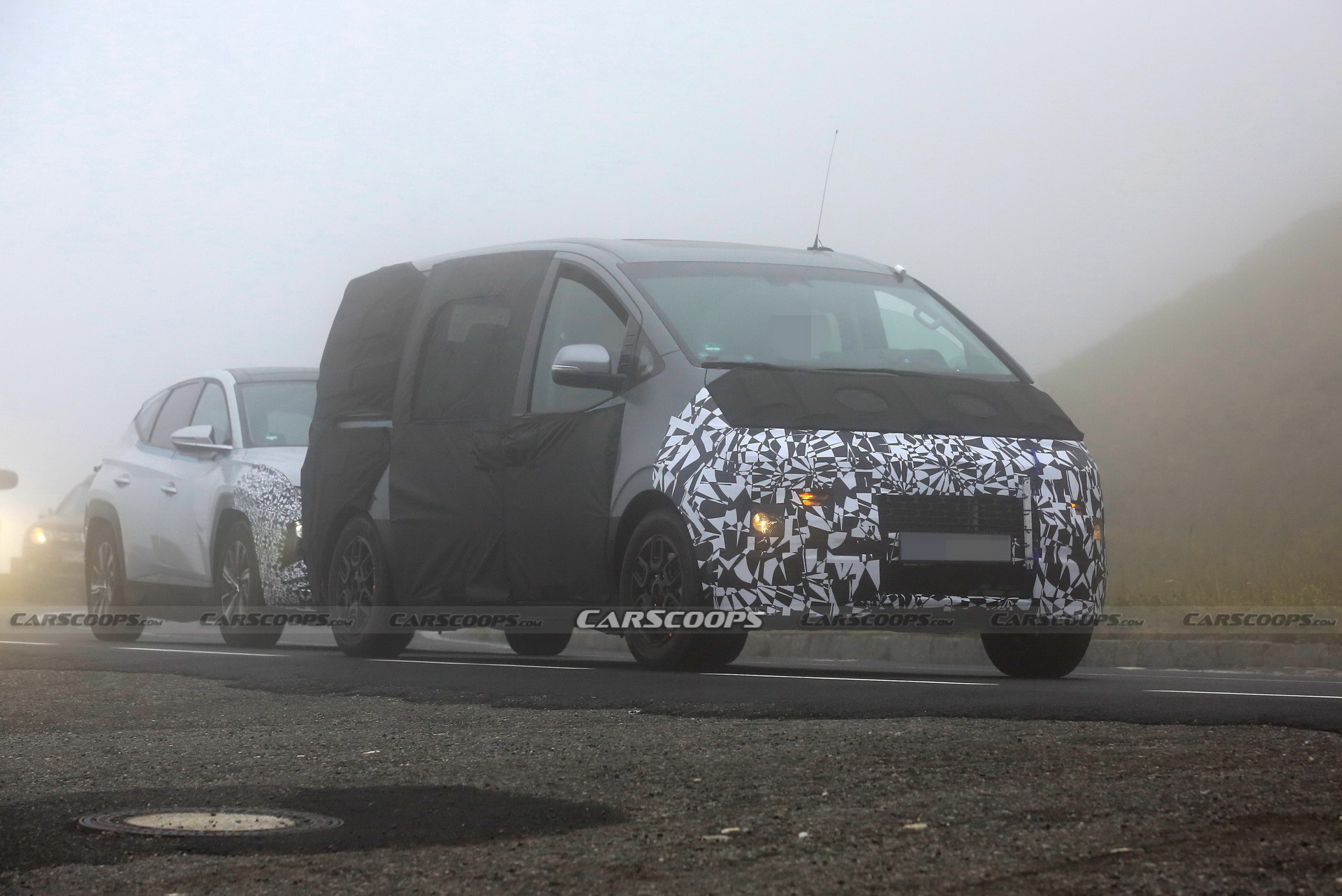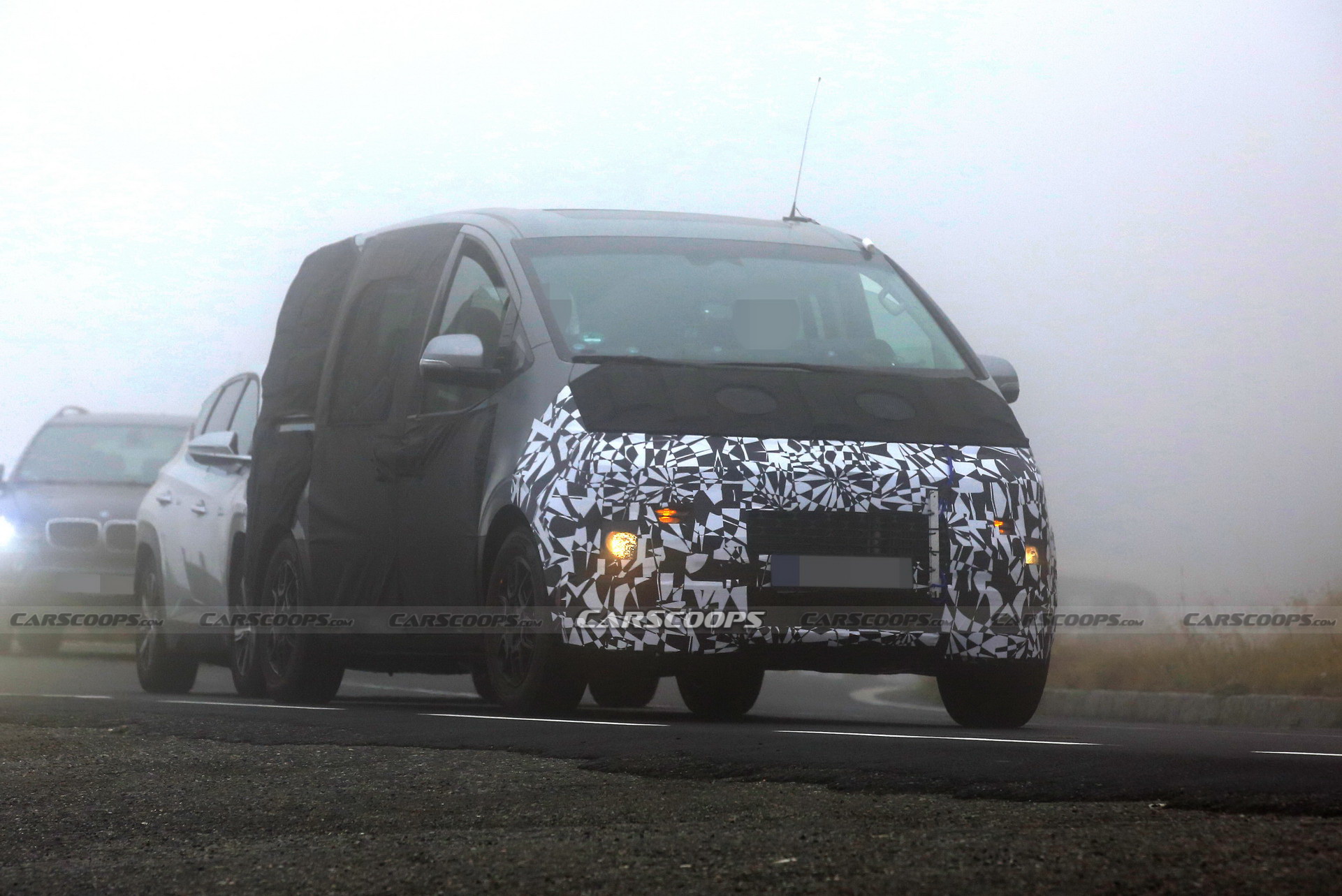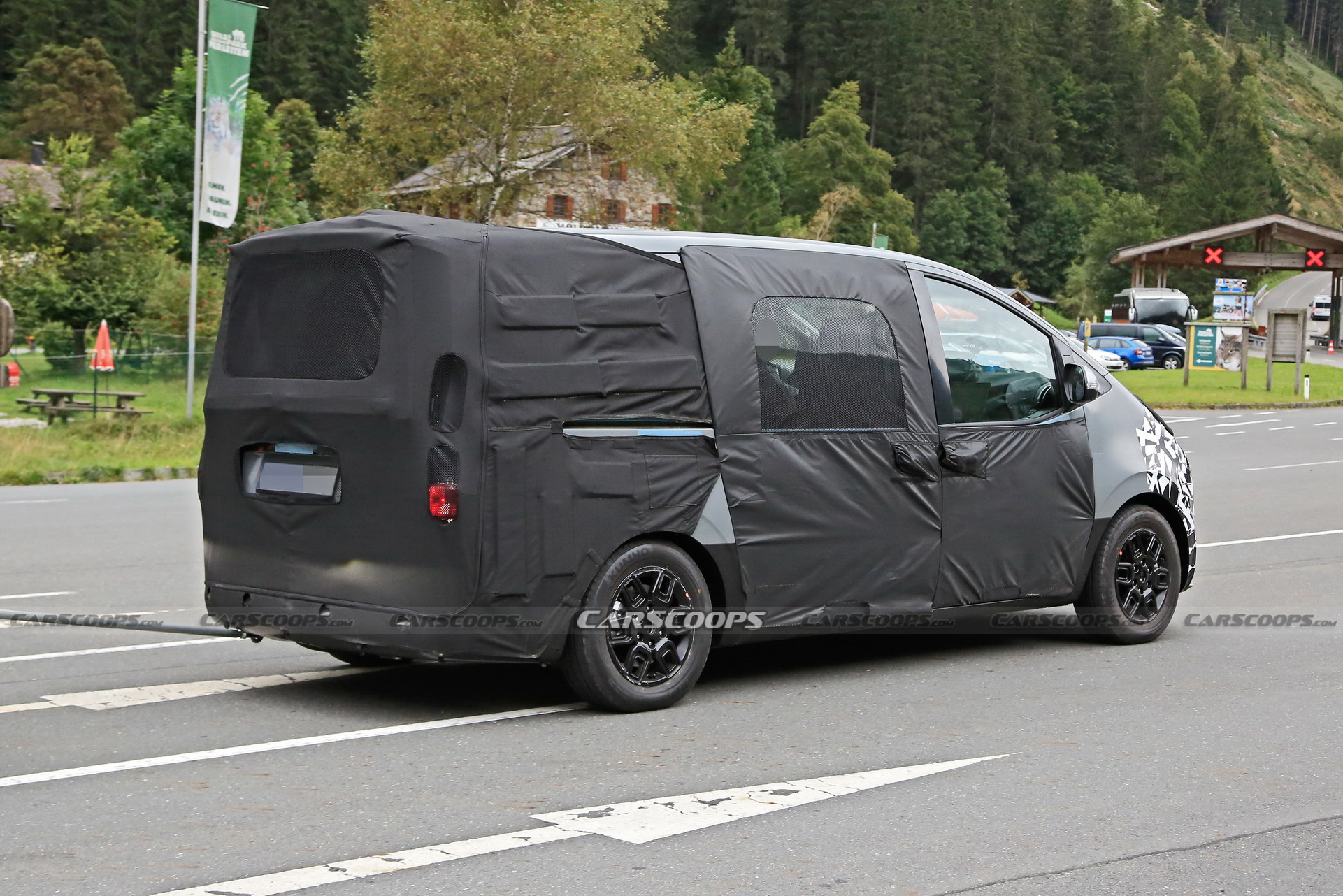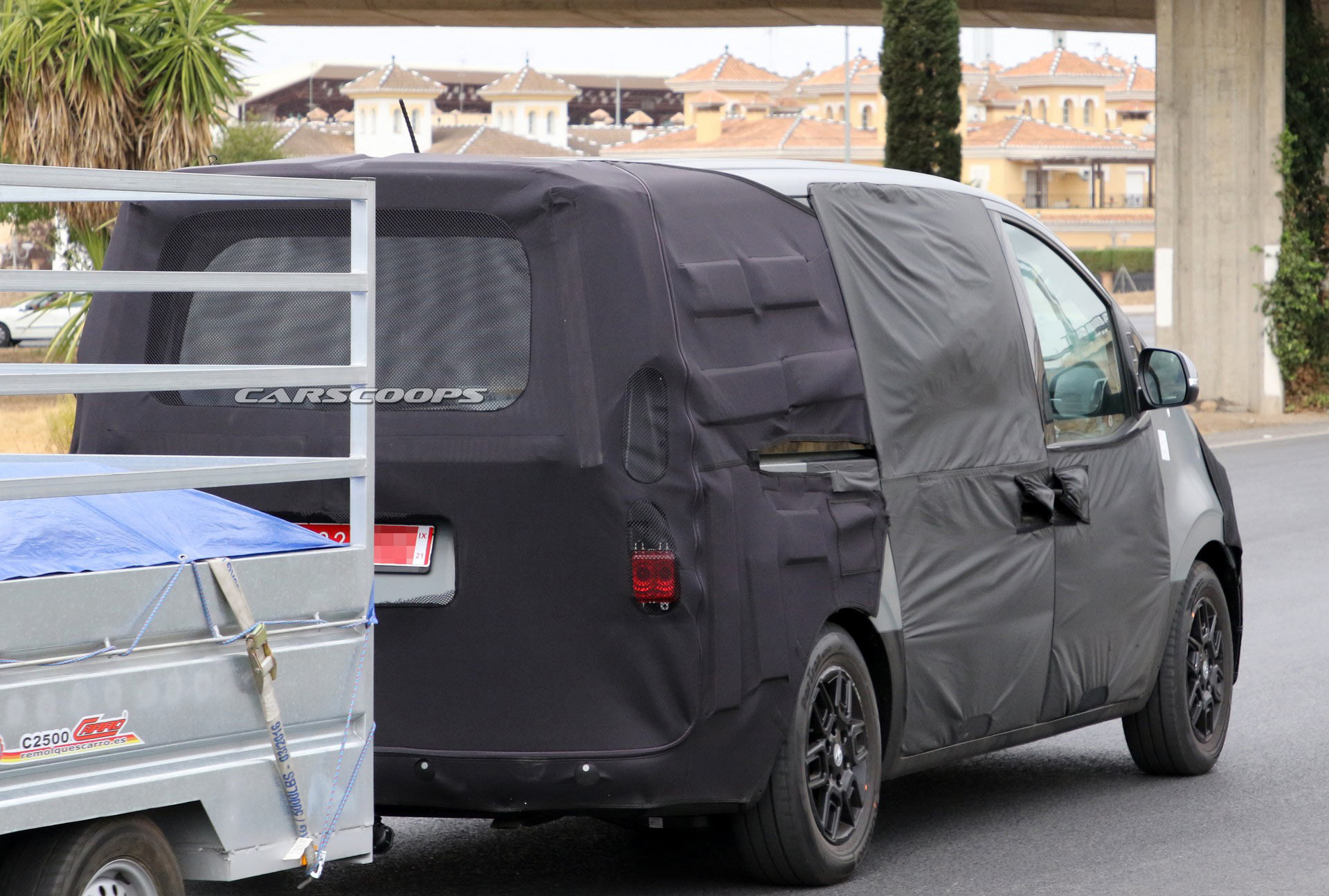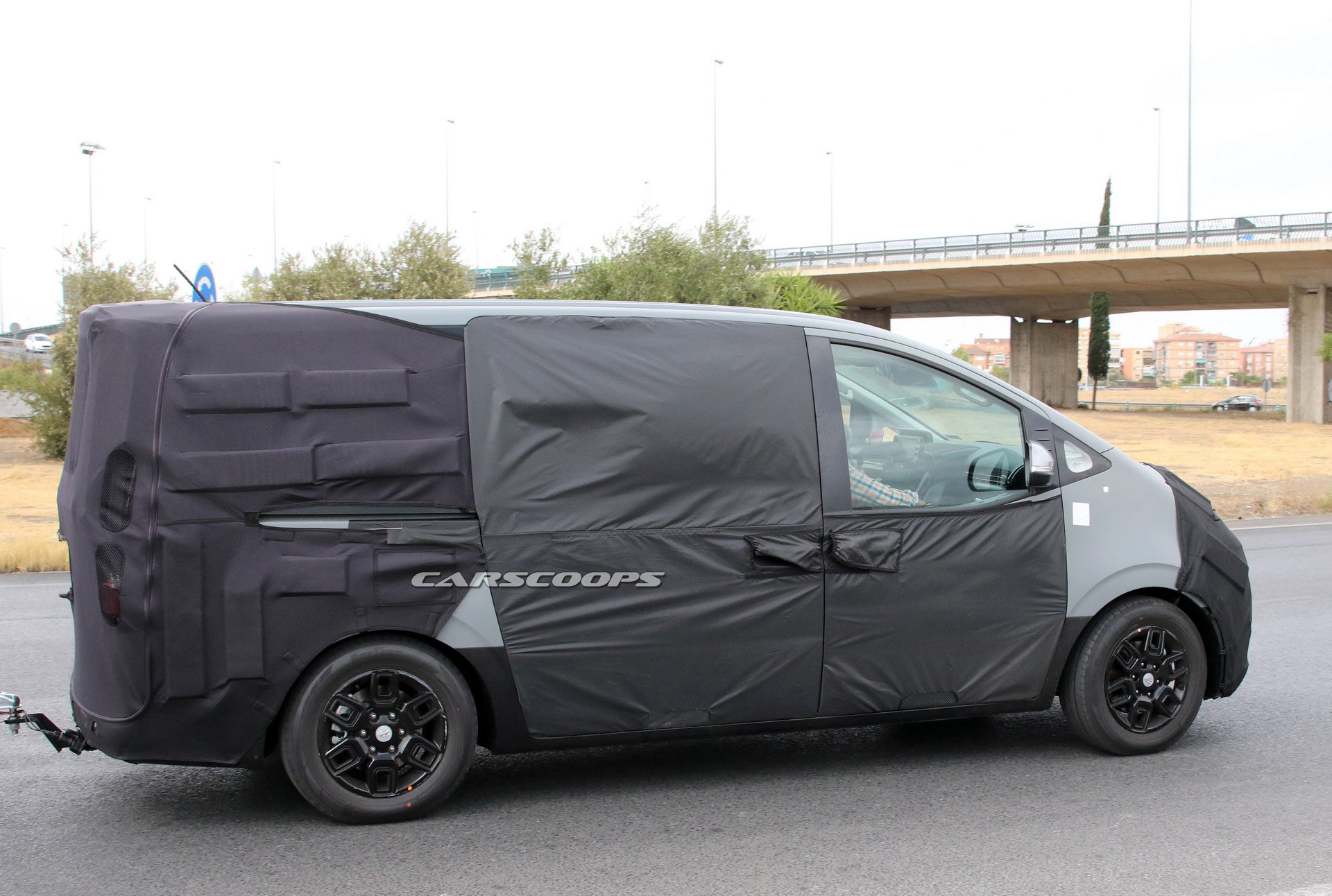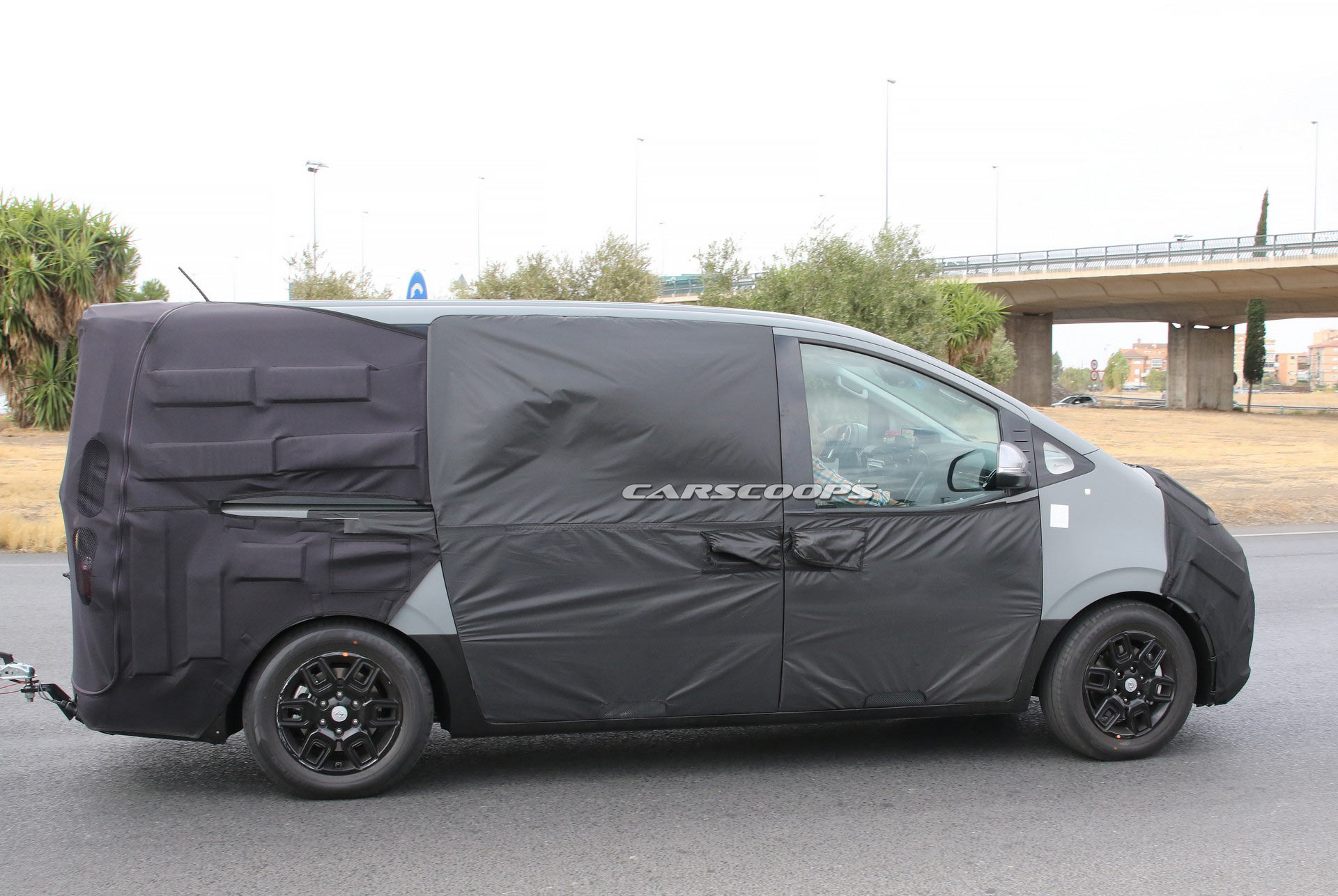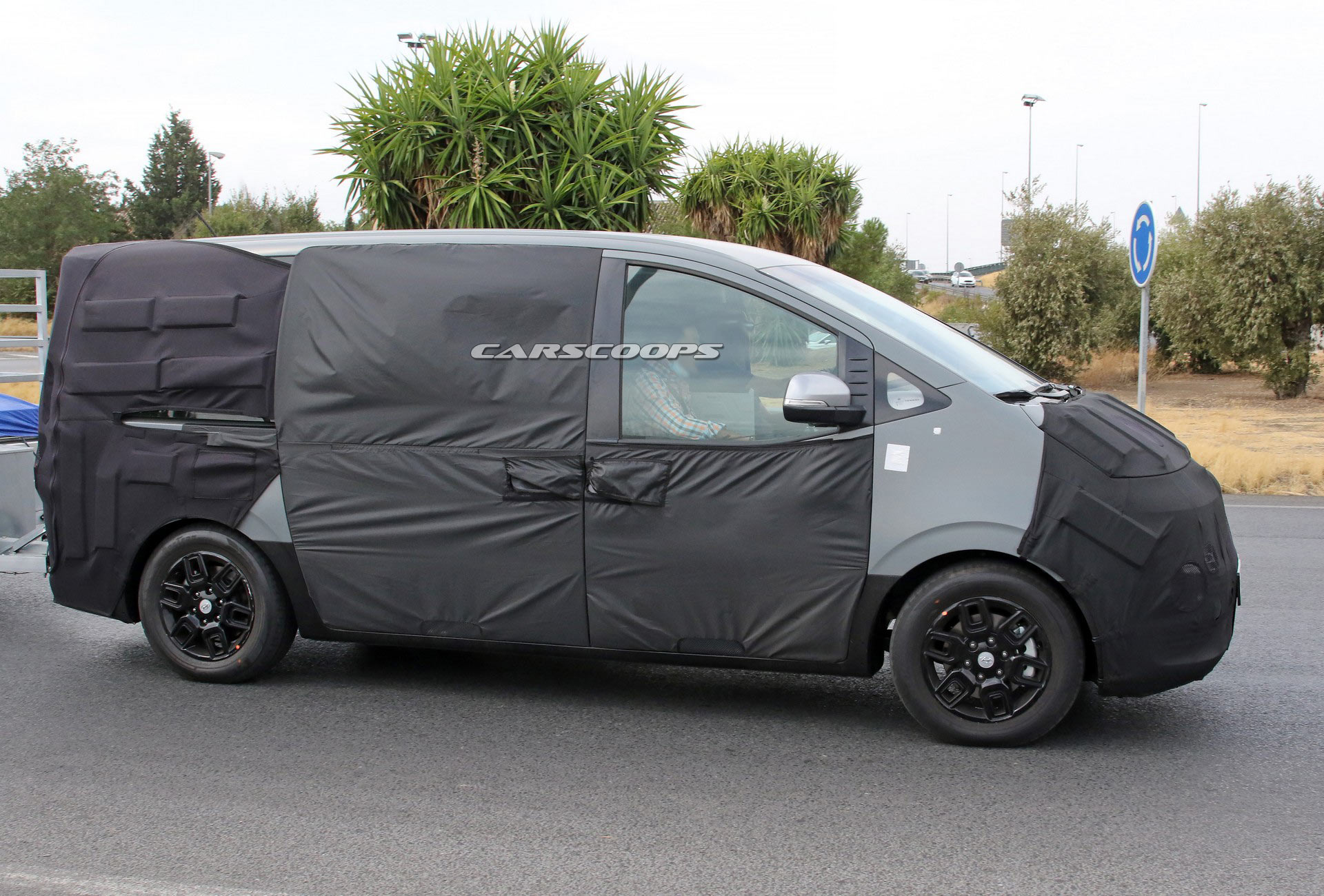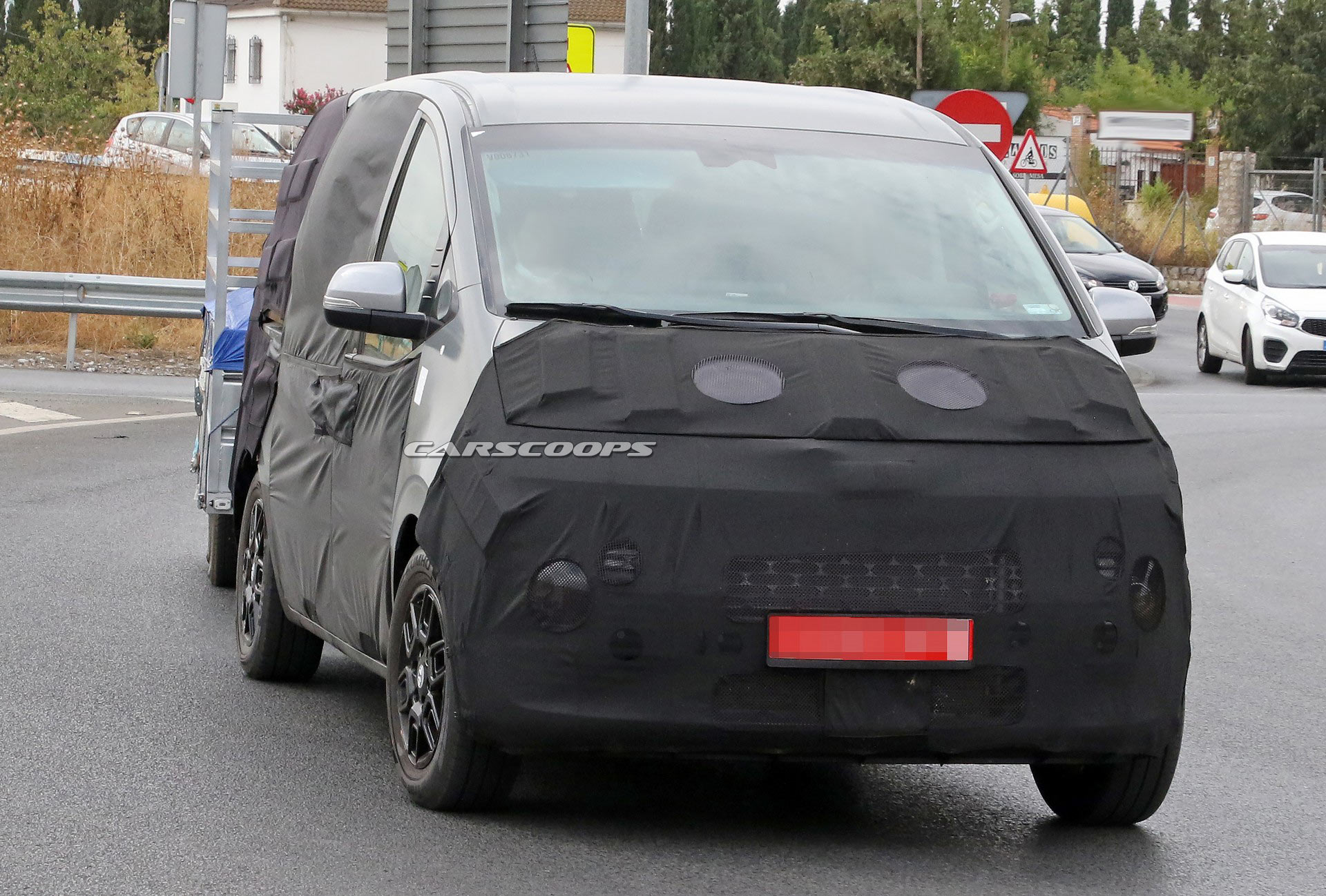These illustrations are made by CarScoops’ artist Josh Byrnes. They are speculative drawings based on prototypes we’ve spied and information we have that are not related to or endorsed by Hyundai.
The typical commercial van isn’t exactly the most desirable thing on the street, yet they’re a vital asset for those needing to haul in safe and secure comfort.
Hyundai’s entrant in this segment is known as the H1 as well as Starex Grand Starex, i800, iLoad and iMax among many other names depending on the market and whether it’s the commercial or people mover variant. It’s not as popular as some well-known nameplates; however, a radical new redesign aims to change this.
Read: Here’s What The New 2022 Kia Niro Will Look Like
Recently-spied prototypes cloaked in minimal camouflage indicate an imminent reveal, so let’s get in first and take a sneak peek before the covers are officially lifted.
A Bold Outlook
At first glance, there’s certainly no escaping the boldness of this redesign. Attention-grabbing frontal styling consists of a large rectangular grille and split-headlamps that feature thin horizontal LED DRL’s under the hood’s leading edge.
Going against the usual trend of having a small glasshouse-to-body ratio, the H1 flips the script by adopting a fish tank appearance with unusually tall side and rear windows. Minimalist sheet metal surfacing is refreshingly devoid of fussy styling flourishes, and the rear has a squared-off look with vertical LED taillights and a large spoiler.
A Nicer Place To Travel
Like the exterior, the cabin also takes a radical new direction; here, the dashboard cascades downwards around the center stack, exuding a more car-like appearance. The steering wheel is shared with other models in the Hyundai lineup, and the freestanding gauge cluster is similar to the one found in Ford’s Mustang Mach-E.
See Also: Chevrolet’s Upcoming All-Electric Pickup Truck
The H1 will again offer dedicated cargo and passenger carrying options, with the latter capable of seating up to 11 people. A significant increase in safety technology will likely feature autonomous emergency braking (AEB) with pedestrian detection, adaptive cruise control, rear cross-traffic alert, safe exit assist, blind-spot monitoring and rear-collision braking.
Under The Skin
Depending on the market, the H1 will be powered by a mix of petrol and diesel engines. The oil burner is a 2.2-litre turbo-four pumping out 198 hp (148kW) and 325 ft-lb (440 Nm) via a new eight-speed automatic transmission. In regions where diesel is unpopular, Hyundai Motor Group’s new 2.5-litre turbo-petrol four-cylinder could do the trick; it produces 286 hp (213 kW) and 311 ft-lb (422 Nm). There’s also been talk about a hybrid as well as a full-electric variant to go with the times, but that’s something we’ve yet to confirm.
Rivals & Reveal
The H1 competes with load haulers that include Volkswagen’s Transporter, Ford Transit Custom, Toyota Hiace/Granvia, Mercedes-Benz Vito and Renault’s Trafic.
We anticipate an official reveal in the coming months, as an MY2022 entrant.




